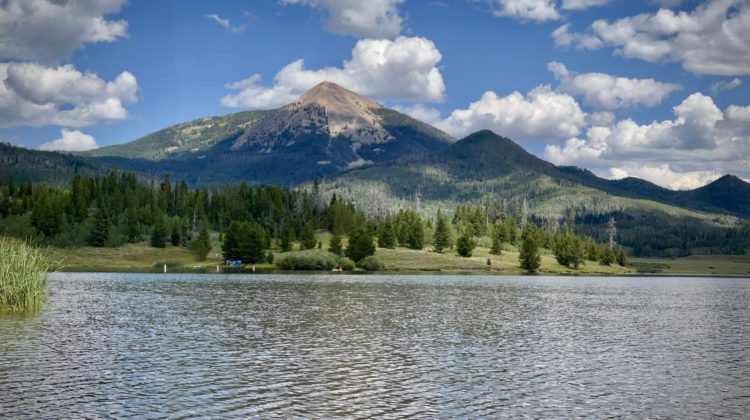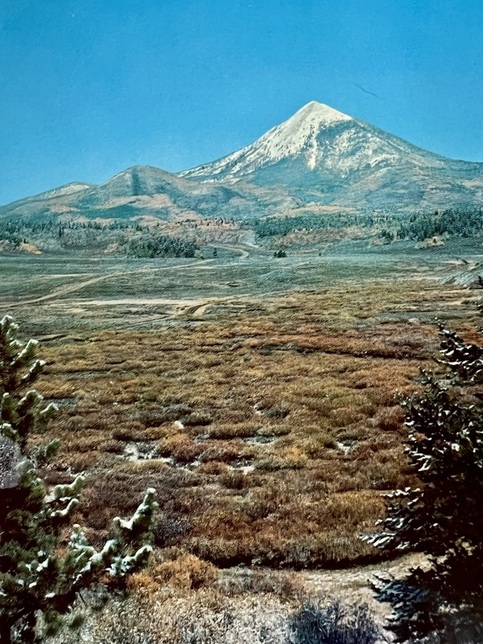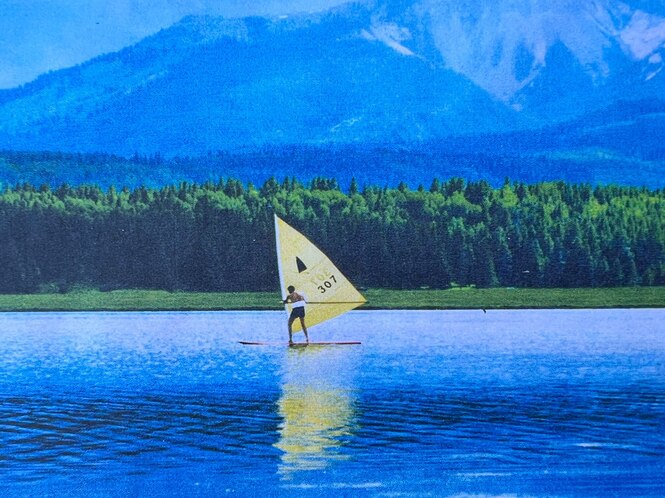
Once land used for raising cattle on the Fetcher Ranch and now a stunning recreational body of water, Steamboat Lake played a pivotal role in the development of Steamboat Ski Resort. Some even say that it first put Steamboat on the map.
John Fetcher, a 1935 Harvard engineering graduate, first arrived in Northwest Colorado in 1949. A rancher with a passion for both skiing and engineering alike, John was one of the former owners of the lands that lie beneath Steamboat Lake. In fact, his son Jay Fetcher, who still resides in Steamboat today, explains with a laugh how he grew up on the bottom of Steamboat Lake.
Originally known as the Hahn’s Peak Basin, sprawling ranchlands and spacious homesteads painted the landscape in northern Routt County prior to 1966. Owning 1,500 acres in the Hahn’s Peak Basin and another 700 acres in Clark, John Fetcher was indeed a rancher, but also an engineer at heart. Jay says, “My dad focused on the mechanical-engineering part of the ranch. He ran bulldozers, leveled meadows, surveyed irrigation ditches and more. My uncle was a physiologist and more focused on the biology component of raising cattle.”

Also a dedicated skier at heart having learned to ski in Switzerland at age 12, John was one of the founders of Steamboat’s ski area. Jay explains that “the ranch was working hard to support itself and the ski area at the same time.” John would often sell cows to meet the ski area’s payroll and drove his cattle trailer to San Diego to pick up the first Christie Lift for delivery to Steamboat.
With such a financial connection between the Fetcher Ranch and the ski area, John was often looking for ways to make both work, but it was a struggle, acknowledges Jay. And with an incredibly short season for raising cattle, the original 1,500-acre Fetcher Ranch in the Hahn’s Peak Basin was also a struggle. Jay explains how the fence repair was tremendous once the snow melted away and how the season was incredibly short, which also stressed the Fetcher Ranch in Clark. At one time, John even proposed developing a lake with nice homes surrounding it on his ranchlands in an effort to support the ski area, but the idea was turned down.
However, in 1966 with the help of Marvin Elkins on the Wildlife Commission and Jim Golden who was the manager of the Yampa Valley Electric Company at the time, an interesting proposal was made regarding the development of a lake in the Hahn’s Peak Basin. At the time, the Hayden Station power plant was planning to add a second generating unit as part of an expansion, and needed a reliable water supply, recounted John in a written history. “The three of us met and came up with the idea that a lake in the Hahn’s Peak Basin could provide the needed water supply, about 5,000-acre feet, and be a spectacular recreation lake,” described John. If the Division of Wildlife and the Salt River Board based in Phoenix, Arizona – the entity overseeing the power plant expansion – agreed to split the cost, the proposal could become a reality.
In October of 1965, John, Marvin and Jim flew to Phoenix to present their case. “We each presented the case for their water supply from different points of view, emphasizing a major cost savings,” recalled John in a recorded history. “After the meeting, the officers invited us to dinner. After dinner, we decided to play poker. I remember that all three of us lost soundly. On returning to Steamboat, Jim Golden received a telegram stating that funds for the Hayden expansion would include half the cost of the reservoir, with the condition that 5,000-acre feet of storage would be dedicated to the Hayden Station power plant. This is why I often say that Steamboat Lake was built over a poker game.”
With a proposal turned into a reality, John Fetcher sold a good portion of his ranch, along with neighbor Stewart Quealy, and construction of the Willow Creek Dam began in 1967. At 100 feet high and 700 feet long, the Willow Creek Dam was built to hold a capacity of 26,364-acre feet, putting several original homesteads underwater. With only 5,000-acre feet reserved for the Hayden Station power plant, Steamboat Lake was developed as primarily a recreational lake, which is what John had always envisioned. “I think my dad was right that it was more valuable recreationally than agriculturally,” says Jay.
On August 18, 1968, former Colorado Governor John Love attended the dedication ceremony of Steamboat Lake. “I remember paddling over to the ceremony on my surfboard,” remembered John Fetcher, who had once been an avid surfer on the Jersey Shore. Progressive at heart, John also enjoyed windsurfing on Steamboat Lake, and might have just been the only windsurfer in Colorado at the time.

Once Steamboat Lake was established and people were enjoying such a magnificent recreational lake, John took the money he made on the sale of his ranchlands and went to Switzerland to purchase the ski area’s first gondola. A Bell-made Stagecoach Gondola that ran for 17 winters and was installed by John himself “was one of the great attractions in northwest Colorado,” said Doug Allen, former vice president of mountain operations at Steamboat Resort. “It put Steamboat on the world’s ski map.” And even John himself once said, “we went out on a limb to build a gondola that ended up building Steamboat.”
A true water engineer and ski pioneer, John left a lasting mark throughout Routt County. Before his death in 2009 at the age of 97, John proudly described how “Steamboat Lake has become one of the most popular vacation destinations in the state.” With a vision to progress and promote recreation on a beautiful lake and an amazing ski area alike, John Fetcher’s efforts in developing Steamboat Lake paved the way for modern-day Steamboat Resort.
Want to learn more about the Fetcher legacy? Listen to our Common Folk in the Boat podcast with Jay Fetcher presented by Billo Premium Cannabis

